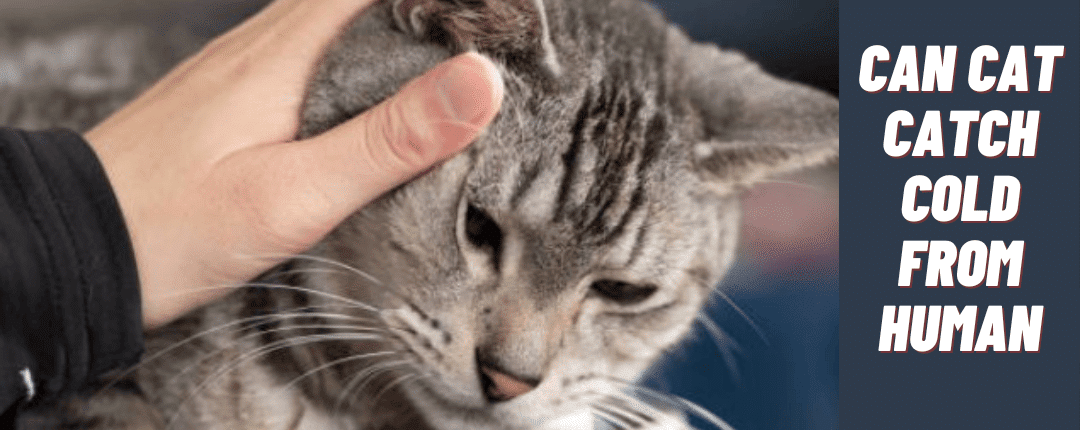Have you ever wondered if your feline friend can catch a cold from you? The bond between humans and cats is undeniable, but questions arise regarding sharing more than just love. In this exploration of feline health, we’ll delve into the fascinating world of cat respiratory systems and the potential transmission of colds between species.
Shedding light on the science behind it, we aim to demystify common misconceptions and provide you with the knowledge to keep your furry companions happy and healthy. Let’s embark on a journey into the intricacies of cat health and the intriguing question: Can cats catch a cold from humans?
Feline Respiratory Systems

Have you ever wondered if your sniffles could affect your furry friend? Let’s unravel whether cats can catch a cold from humans. We’re diving deep into the nitty-gritty of feline respiratory systems to understand how these whiskered companions breathe. From nasal passages to lungs, we’ll explore the intricacies, drawing comparisons with our respiratory setup.
Join us on this straightforward journey to grasp the basics and vulnerabilities in your cat’s respiratory health.
Anatomy of a Cat’s Respiratory System
Nasal Passages: Cats, like us, have nasal passages, the entry point for breath. These slender channels filter the air, ensuring a clean inhale. Unlike humans, cats boast a superior sense of smell, making their nasal passages a crucial part of their sensory experience.
Sinuses: Sinuses play a role in humans and cats, acting as air-filled pockets around the nasal area. In cats, these sinuses contribute to their distinctive meows and communicate with their nasal passages, maintaining respiratory balance.
Lungs: The lungs, the powerhouses of respiration, function similarly in cats and humans. However, feline lungs have unique features tailored to their physiology, efficiently extracting oxygen from inhaled air and maintaining their agile, active lifestyles.
Comparative Analysis with Human Respiratory Systems
Similarities: In respiration, cats and humans share common ground. Both species depend on nasal passages, sinuses, and lungs to breathe. This parallel structure lays the foundation for understanding the potential transmission of respiratory issues between them.
Differences: While similarities exist, differences arise in the intricacies of each species’ respiratory systems. Cats, obligate nose breathers, rely predominantly on their noses, whereas humans alternate between nose and mouth breathing. Recognizing these distinctions is vital in gauging the risks associated with cross-species cold transmission.
Vulnerabilities in a Cat’s Respiratory Health
Cats, despite their agility, aren’t immune to respiratory challenges. Their unique anatomy poses vulnerabilities, especially in shared living spaces with humans. Factors like dust, smoke, and allergens can trigger respiratory issues. Understanding these susceptibilities empowers pet owners to adopt preventive measures, ensuring a healthier coexistence.
Read more about: kokoa-tv.net
Overview of Common Cat Respiratory Infections
Are you curious if your cold could be more than a human affair? Let’s delve into cat respiratory infections and whether your feline friend could catch a cold from you. In this simple breakdown, we’ll explore common ailments like Feline Upper Respiratory Infection (URI), Feline Herpesvirus (FHV-1), and Feline Calicivirus (FCV). Plus, we’ll investigate the intriguing question of whether your sneezes could impact your cat.
Feline Upper Respiratory Infection (URI)
Causes and Symptoms: URI, often akin to the common cold in humans, stems from various viruses. Sneezing, nasal discharge, and eye irritation are telltale signs. Identifying these symptoms early aids in prompt care and containment.
Transmission Among Cats: URI spreads through direct contact or shared spaces. Cats in close quarters, like shelters, are particularly susceptible. Understanding transmission dynamics helps prevent the rapid spread of this respiratory infection.
Feline Herpesvirus (FHV-1)
How It Affects Cats: FHV-1 targets a cat’s respiratory and ocular systems. Sneezing, eye discharge, and lethargy are common. While most cats recover, some may become carriers, necessitating ongoing care.
Transmission Factors: Close cat-to-cat contact facilitates FHV-1 transmission. Stressors like moving or a new pet can trigger flare-ups. Recognizing these factors aids in managing the virus and preventing its recurrence.
Feline Calicivirus (FCV)
Characteristics and Symptoms: FCV manifests with oral ulcers, fever, and lameness. The severity varies, with some cases being mild and others more severe. Recognizing these characteristics aids in early intervention and treatment.
Modes of Transmission: FCV spreads through direct cat-to-cat contact, contaminated objects, or aerosolized droplets. Implementing hygiene measures, especially in multi-cat households, minimizes the risk of transmission.
Can Cats Catch a Cold from Humans?
Possibility and Underlying Factors: While rare, the possibility of cats catching a cold from humans exists. Immunological differences play a role, and stressors can increase susceptibility. Knowing these factors helps pet owners take proactive measures.
Existing Studies and Research: Ongoing research explores the dynamics of cross-species transmission. While conclusive evidence is limited, staying informed about emerging findings contributes to responsible pet ownership.
Human Colds vs. Cat Respiratory Infections
Have you ever wondered if your cold could be shared with your feline friend? Let’s unravel the mystery of human colds versus cat respiratory infections. In this simple guide, we’ll break down the nuances, from the types of human colds to exploring if your cat can indeed be affected. Join us as we navigate the realms of science, symptoms, and real-life cases to shed light on the potential crossover between human sniffles and feline health.
Differentiating Human and Feline Respiratory Illnesses
Types of Human Colds: Human colds come in various forms, from the common cold to influenza. Understanding these distinctions helps highlight the complexities of respiratory illnesses, setting the stage for comparing them with feline counterparts.
Symptoms Comparison: While humans and cats may experience respiratory distress, the symptoms differ. Humans might have a runny nose and sore throat, while cats may exhibit sneezing, coughing, or nasal discharge. Recognizing these variations is crucial for accurate diagnosis and care.
Can Cats Be Affected by Common Human Colds?
Scientific Perspectives: Scientifically, the likelihood of cats catching common human colds is low. The unique physiology of feline respiratory systems and immune responses plays a role in this distinction. Delving into these perspectives provides clarity on the potential risks.
Case Studies and Anecdotal Evidence: Examining real-life cases and anecdotes offers insights into the rare instances cats show cold-like symptoms after human exposure. While these cases exist, they are exceptions rather than the rule, emphasizing the importance of considering individual cat health and environmental factors.
Factors Influencing Cross-Species Infection
Can your common cold be a concern for your cat? Let’s explore the factors influencing the potential for cross-species infection between humans and our feline companions.
In this straightforward guide, we’ll uncover the basics of immunological differences and environmental considerations that affect whether your cat could catch a cold from you. Join us in unraveling the mysteries of how our immune systems and living spaces impact the health of our beloved pets.
Immunological Differences
Cat’s Immune Response: Cats possess a unique immune system tailored to their physiology. While they may fend off various pathogens effectively, some viruses may specifically impact feline respiratory health. They are understanding how their immune response functions provides insight into the potential risks.
Human Immune System: Human immune systems are distinct, protecting against various viruses. However, the differences in our immune responses compared to cats contribute to the rarity of cross-species infections. Exploring these variations aids in comprehending the dynamics of disease transmission.
Environmental Considerations
Shared Living Spaces: Living in close quarters with our feline companions can influence the likelihood of cross-species infections. Cats thrive on routine, and environmental changes, including exposure to human pathogens, can impact their respiratory health. Recognizing the significance of shared spaces helps mitigate potential risks.
Hygiene Practices: Maintaining good hygiene practices is pivotal in preventing the spread of infections between humans and cats. Regular handwashing, especially after illness, reduces the risk of transmission. Additionally, ensuring a clean living environment, focusing on litter boxes and communal areas, contributes to a healthier coexistence.
Final Thoughts
While the likelihood of cats catching a cold from humans is rare, understanding the dynamics of feline respiratory health is crucial for responsible pet ownership. Immunological differences and environmental factors play pivotal roles.
By recognizing these nuances and implementing hygiene practices, we can ensure a healthier coexistence with our feline companions. So, can cats catch a cold from humans? It’s possible, but the risks can be minimized with informed care.
Read more about: universenews24






